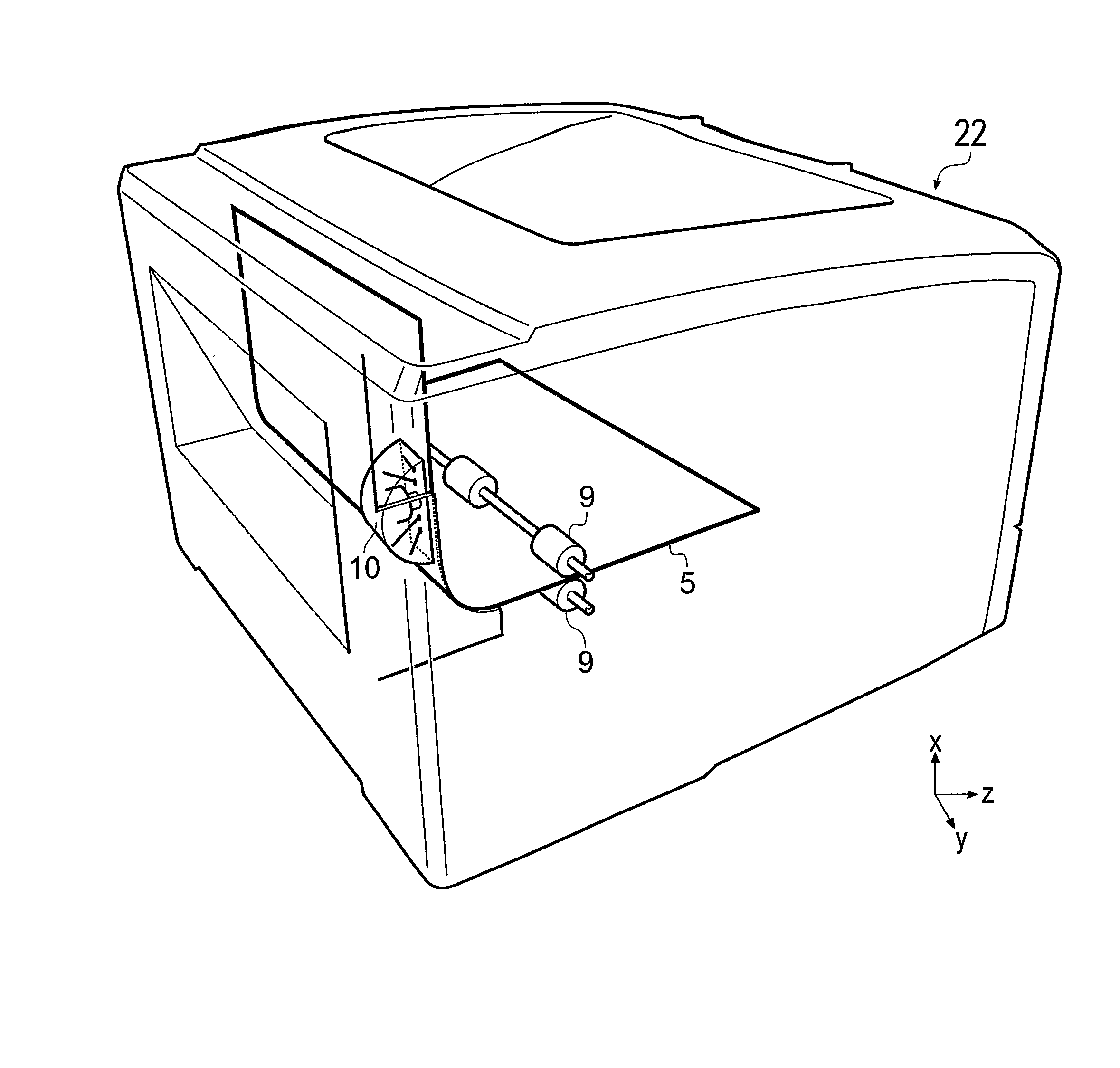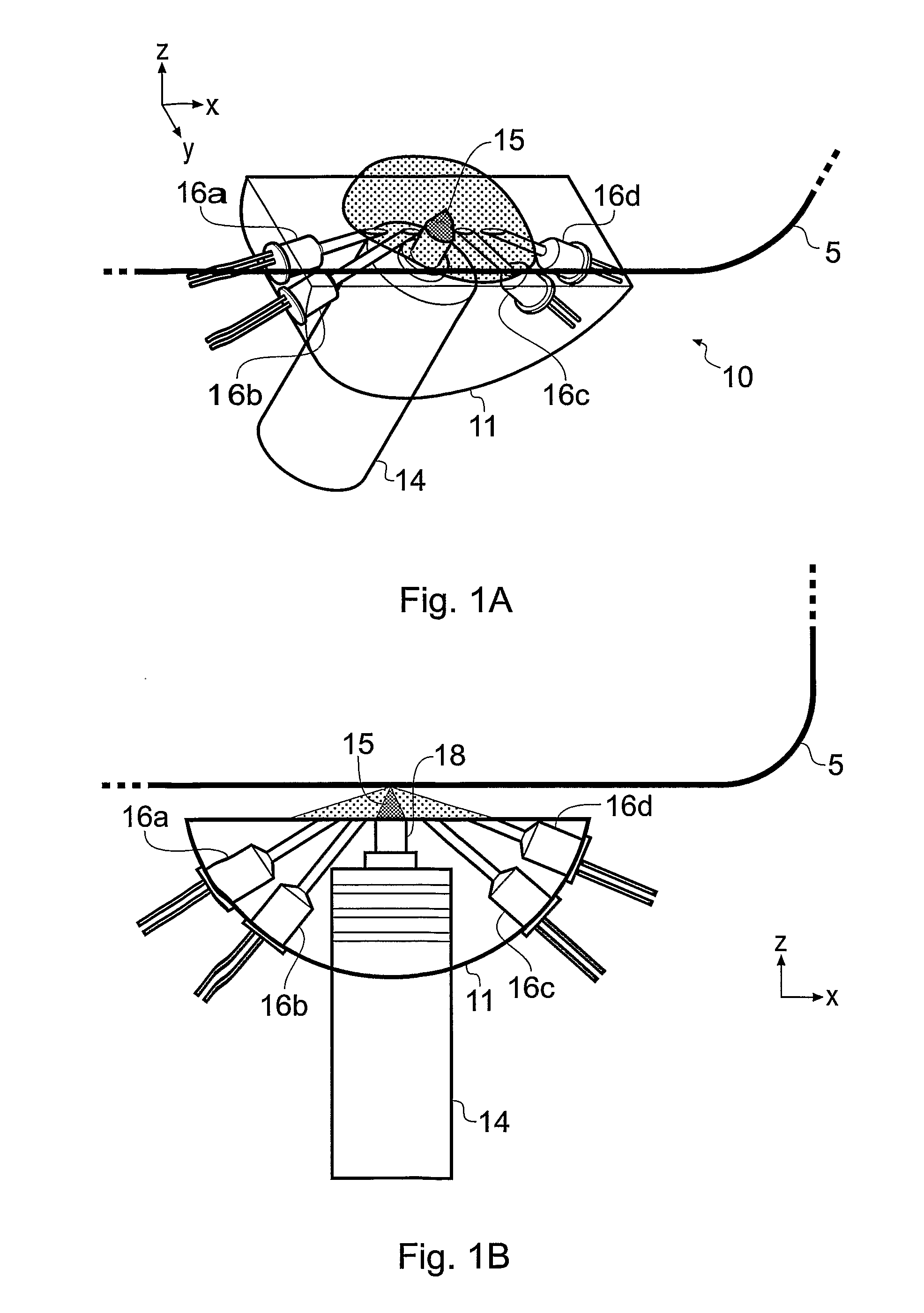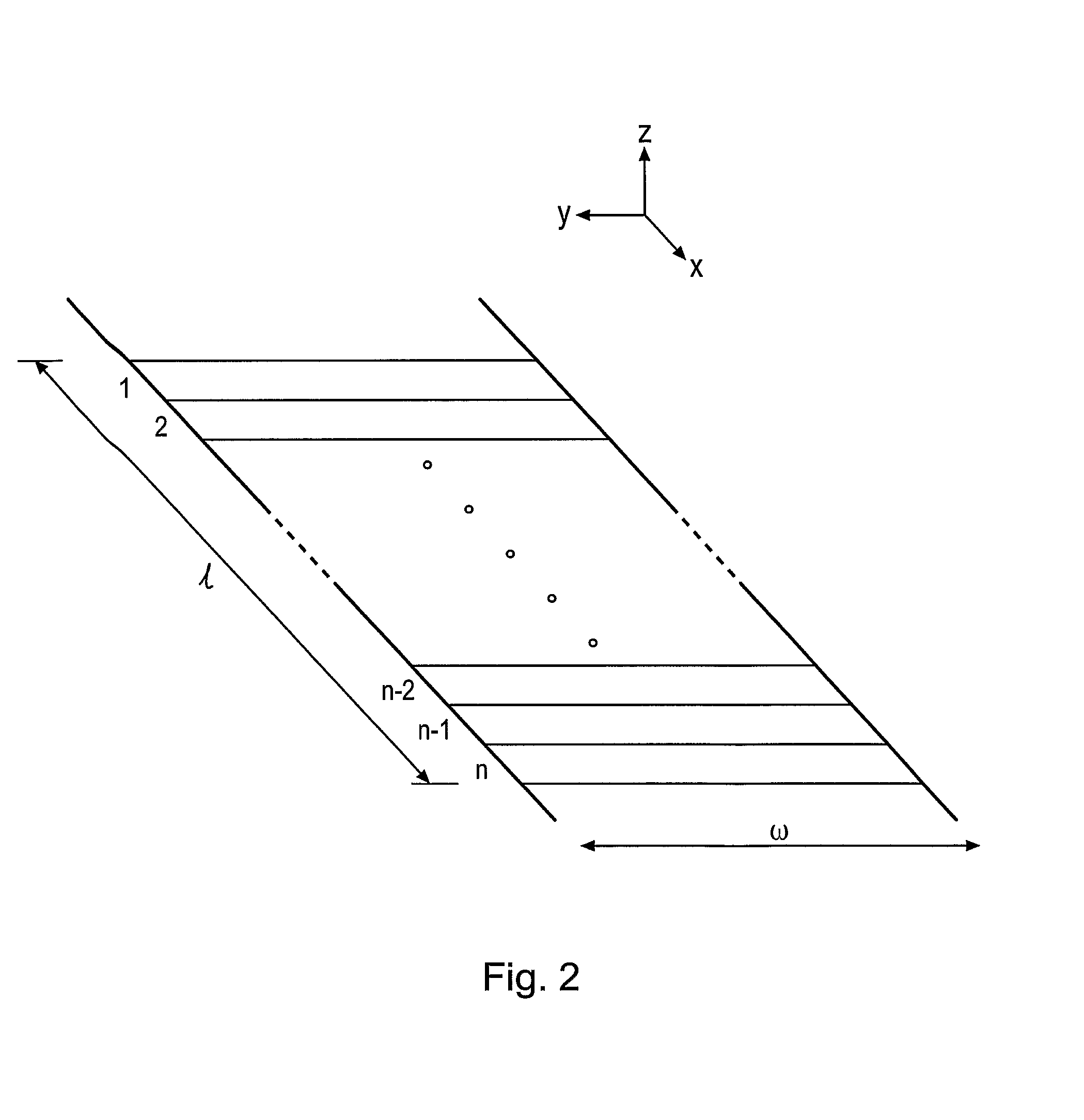Methods and Apparatuses for Creating Authenticatable Printed Articles and Subsequently Verifying Them
a printing article and authenticating technology, applied in the field of security methods, can solve problems such as difficulty, inability to make ideas work properly, and criminals becoming more sophisticated, and achieve the effect of high level of security
- Summary
- Abstract
- Description
- Claims
- Application Information
AI Technical Summary
Benefits of technology
Problems solved by technology
Method used
Image
Examples
Embodiment Construction
[0066]FIGS. 1A and 1B are schematic representations in perspective and side view respectively of a scan head 10 of an embodiment of the invention. The scan head 10 is for measuring a digital signature from a piece of paper 5 or other printable article which is conveyed past the scan head 10 in the x-direction through its reading volume (see inset axes in the drawing). The principal optical components are a laser source 14 for generating a coherent laser beam 15 and a detector arrangement 16 made up of a plurality of k photodetector elements, where k=4 in this example, labelled 16a, 16b, 16c and 16d. The laser beam 15 is focused by a cylindrical lens 18 into an elongate focus extending in the y direction (perpendicular to the plane of the drawing) and lying in the plane of the paper path. In an example prototype, the elongate focus has a major axis dimension of about 2 mm and a minor axis dimension of about 40 micrometres. These optical components are contained in a mounting block 11...
PUM
 Login to View More
Login to View More Abstract
Description
Claims
Application Information
 Login to View More
Login to View More - R&D
- Intellectual Property
- Life Sciences
- Materials
- Tech Scout
- Unparalleled Data Quality
- Higher Quality Content
- 60% Fewer Hallucinations
Browse by: Latest US Patents, China's latest patents, Technical Efficacy Thesaurus, Application Domain, Technology Topic, Popular Technical Reports.
© 2025 PatSnap. All rights reserved.Legal|Privacy policy|Modern Slavery Act Transparency Statement|Sitemap|About US| Contact US: help@patsnap.com



